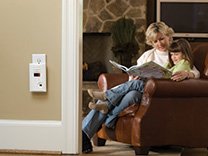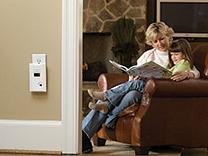Fire Never Takes a Summer Vacation
(NC) Did you know that cottages, mobile homes, some boats and even pop-up trailers require smoke alarms?
Building codes, provincial laws and municipal bylaws have distinct specifications for these types of dwellings. Virtually every type of camper, trailer, RV, cottage and boat with living, cooking or sleeping quarters requires a working smoke alarm outside sleeping areas at a minimum.
Many dwellings also contain devices that generate carbon monoxide (CO). Known as the silent killer, this lethal gas is colourless, odourless and tasteless. It's emitted from fuel-burning sources such as wood stoves, wood, oil, propane or gas fireplaces, appliances, stoves, heaters, coolers and generators. It is also present in boat and vehicle exhaust.
In addition to having your heating systems, flues and ductwork checked annually by a professional, it is prudent to install at least one carbon monoxide alarm in addition to smoke alarms. A working CO alarm is the only safe way to know if the gas is present.
Currently, Ontario and Yukon have laws requiring the installation of CO alarms outside all sleeping areas in any homes that contain potential carbon monoxide sources. But with fatalities and near-misses continuing across the country, more provinces are considering similar legislation.
On or before the May long weekend, fire safety officials advise to take stock of your smoke and CO alarms before you kick into leisure mode. Fresh batteries should be installed and cobwebs and dust lightly vacuumed off.
It is equally important to check the age of your smoke and carbon monoxide alarms. Over time, sensors can become obstructed with dust, cooking grime and other airborne contaminants. Even if it sounds when you push the test button, any smoke alarm over 10 years old must be replaced. Likewise, replace CO alarms every 7 to 10 years, depending on the brand. To determine an alarm's, manufacturing dates can normally be found on stickers or under the alarm cover. Replacement rules apply whether an alarm is hardwired, battery powered or plug-in.
When replacing outdated alarms, today's new technology makes safety simpler than ever. Kidde, the country's leading manufacturer of smoke and carbon monoxide alarms, offers a broad “worry-free†lineup. Many models contain intelligent sensors that can help reduce false alarms. But the main selling feature is the alarm's 10-year sealed lithium battery that is activated upon installation. It never needs to be replaced for the alarm's entire lifespan.
This summer, whether you vacation in a cottage, RV, trailer or watercraft, think fire and carbon monoxide safety before cracking that first cold one of the season.
Find more summer safety tips at www.safeathome.ca.
www.newscanada.com
Comments
There are 0 comments on this post





